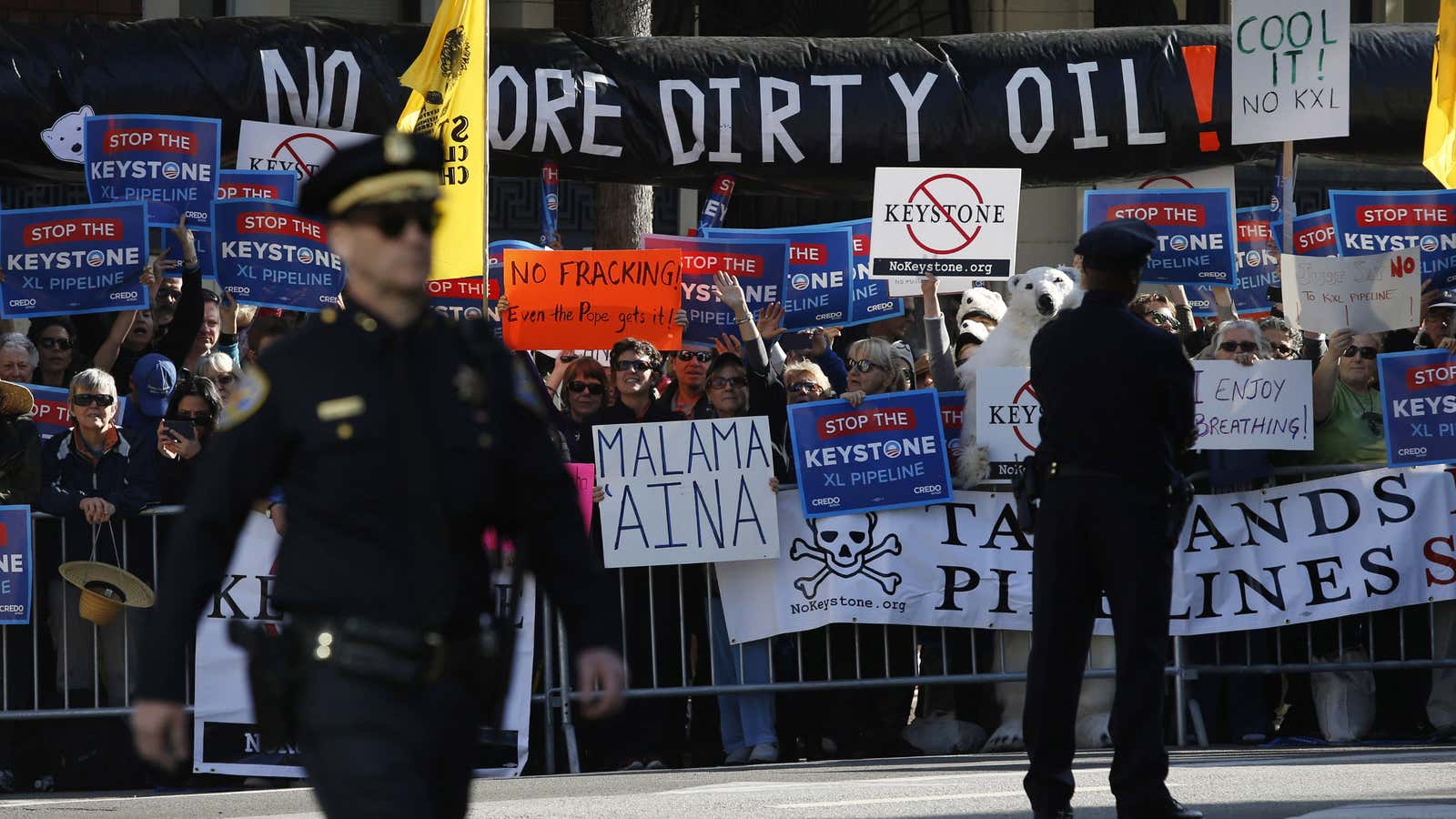A US State Department review today rebuffed key objections to a huge oil pipeline from Canada that has been a loci for American protestors who starkly equate the project with Armageddon.
Almost no proposed pipeline anywhere in the world has attracted such opposition. Environmentalists view the 875-mile line from Canada into the US as a proxy for fossil fuels and CO2 pollution, and many have made blocking it the centerpiece of their lobbying efforts. In a statement today, the Arizona-based Center for Biological Diversity said, “Oil companies may love this pipeline, but it’s a disaster in the making for our climate and for the wildlife in its path.”
But with today’s review, Keystone, which would carry 830,000 barrels of heavy crude a day to Gulf of Mexico refineries, moves to the next stage, which is a 90-day review by eight other government agencies. If it passes muster with them, it would go on to US president Barack Obama for his consideration.
The review in effect concluded that the Canadian oil sands would be shipped to market whether or not Keystone is built. Already, hundreds of thousands of barrels of the oil sands are being shipped to US refineries by rail, resulting in numerous accidents. But the oil industry supports Keystone because it is much cheaper and safer to transport crude by pipeline than by rail.
Today’s review also found that the greenhouse gases to be emitted through the operation of Keystone would differ little in volume from that of any other type of crude. To reach that conclusion, the reviewers compared the sands with four other types of crude types. Oil sands emissions would be 147-168 million metric tons of carbon dioxide (MMT-CO2) a year, compared with 124-159 MMT-CO2 a year with the alternate crudes, the study said. The review also found that CO2 emissions would be more or less the same regardless of how the oil sands were shipped—by pipeline, rail or other routes.
